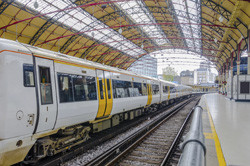Maintenance increasing rail capacity
The European Commission plans a general shift from road to rail transportation, for reasons of economic competitiveness and environmental sustainability. Key to the proposal is increasing rail freight capacity, which requires a greater amount of maintenance performed in less time. With EU funding, the AUTOMAIN(opens in new window) project examined options to achieve this. The goal was to make rail freight more dependable by generating additional capacity on the existing network — by reducing maintenance time requirements by up to 40 %. Thus, the project focused on developing maintenance technologies, using a combination of innovation and adaptation from other industries. The 18-member project ran from early 2011 to early 2014. The consortium investigated five key areas of innovation. One approach was to adapt a lean manufacturing concept (meaning to reduce production waste) to rail usage. The concept was applied to key track maintenance processes, including tamping, grinding, and switches and crossings (S&C) maintenance. Initial comparison of best practices of several European rail agencies highlighted potential technologies that could reduce maintenance times. A second area of focus was inspection technologies. The project concluded that continuous, daily track monitoring was possible using in-service trains running at normal speeds. Project partners developed a laser-based trolley for assessing S&Cs, and the associated algorithms. The project's switch inspection device will also be able to monitor tack geometry. The prototype was shown to be able to assess approximately 130 switches per night, compared with 5 per day using traditional methods. The new method does not disrupt rail traffic and has no safety concerns. The project also applied a lean analysis to typical grinding shifts, and identified several efficiency improvements. Measures included encouraging use of track-friendly vehicle designs, setting maintenance targets that address repair longevity, and setting performance standards that do not damage rails. AUTOMAIN also suggested similar improvements to servicing of modular S&Cs, and to planning and scheduling. Innovative improvements highlighted by the project reduce the maintenance track possession time by up to 40 %. The saved time is then available for freight usage, resulting in an improvement to rail traffic efficiency and increased capacity.



